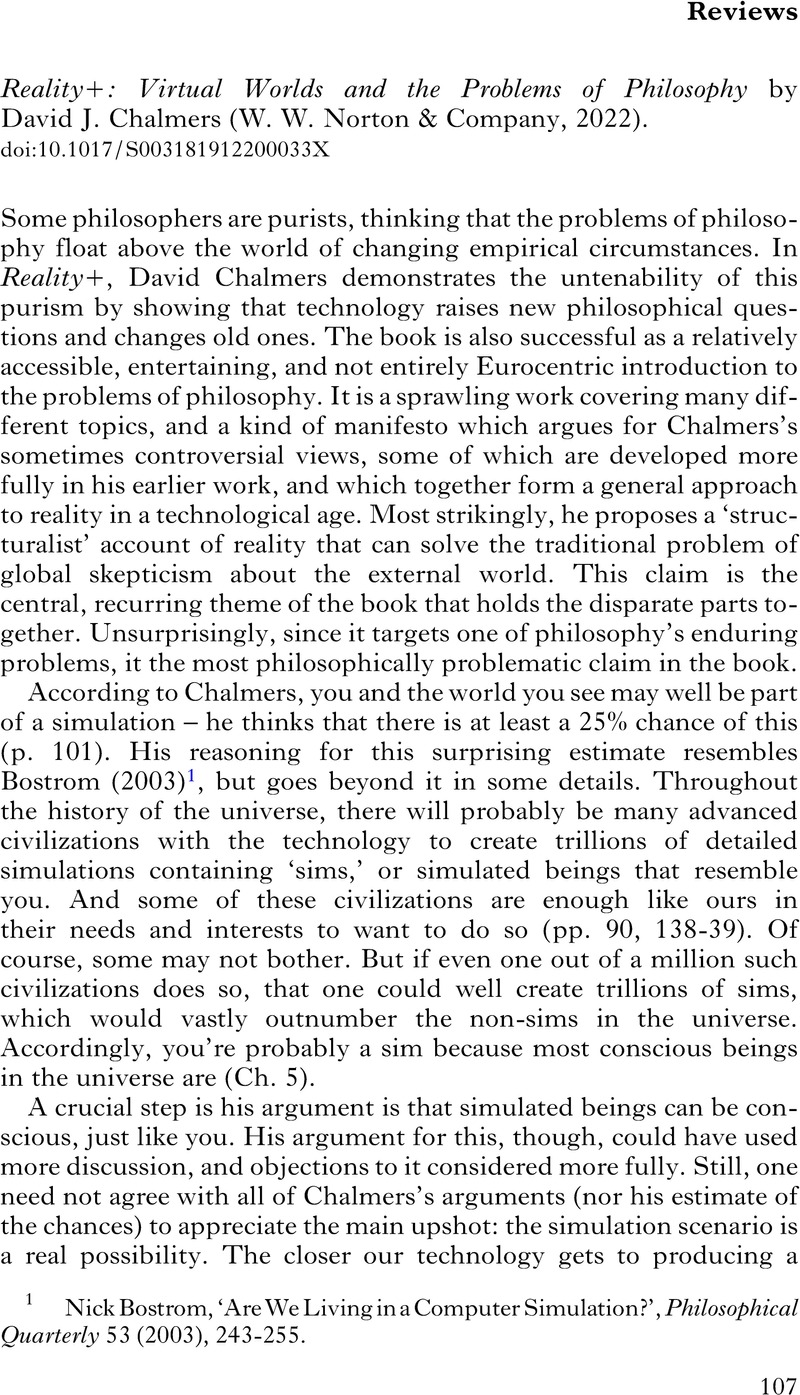Crossref Citations
This article has been cited by the following publications. This list is generated based on data provided by Crossref.
Schwitzgebel, Eric
2024.
Let's hope we're not living in a simulation.
Philosophy and Phenomenological Research,
Vol. 109,
Issue. 3,
p.
1042.
Avnur, Yuval
2024.
The Skeptic and the Veridicalist.




